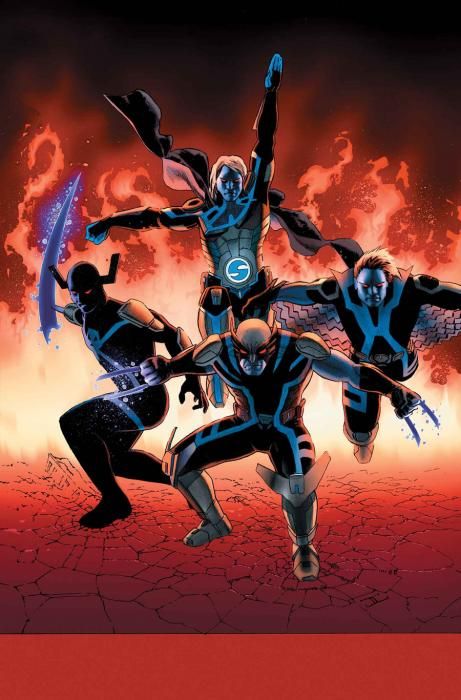Rick Remender and Daniel Acuña's "Uncanny Avengers" #8 hit that middle part of so many story arcs where events turn serious, but where nothing too magnificent happens. It's not a bad comic book by any stretch, especially with Acuña's sublime visuals, but it's also not the best or most compelling part of the larger chapter.
Remender's technique of shifting narration point of view multiple times in an issue while also including third person viewpoint is hit-or-miss. It works really well sometimes and other times leaves readers a bit at sea. Unfortunately, this issue is the latter. For a writer so adept at character voice, point-of-view is an interesting choice, as sometimes it can pull readers out of the book and emotionally stranded. The issue actually opens with Rogue's narration, which takes a minute to figure out since she's nowhere to be seen. It's an odd choice and the story never gets back to Rogue, which makes it feel even more random. Instead, the story shifts to Wonder Man, then Wolverine, then third person narration, then Wolverine again, and then back to 3rd person to close out the book. It's a lot for a 20-page comic book.
Although Remender has proved one of the better writers of late when it comes to emotionally resonant work, the Captain America and Wasp conversation was an odd info dump. Remender is better when he digs deep on his characters' disturbing inner monologue, like in Wonder Man's thoughts regarding his brother and Rogue's about Captain America. It's good when characters don't pull punches, especially internally, and it makes for interesting dynamics both for now and in the future. However, the writing and narrative choices didn't quite pop as is usually the expectation with Remender.
Acuña is one of those rare artists that can manage to make every frame look like a painting without losing the storytelling component so vital to comics. Sometimes his work looks slightly stiff, but it's impressive how much movement and energy he's able to capture in fully painted work. Whether it's emotion on the faces of stalwart superheroes or establishing shots of the Himalayas, Acuña's work is always well considered and highly detailed. His colors are incredibly evocative, conveying mood and tone with ease, and yet he never ignores more practical concerns like how to light a scene.
There's a lot of history coming out of the Avengers/X-Men Schism, and more naturally a lot of characters with differing philosophies and beliefs driving the core of Remender's "Uncanny Avengers" and it makes for a dense smart read, and perhaps a masterful arc -- eventually. However, as a standalone comic book, it might not be that exceptional, even with Acuña's gorgeous painted artwork.

